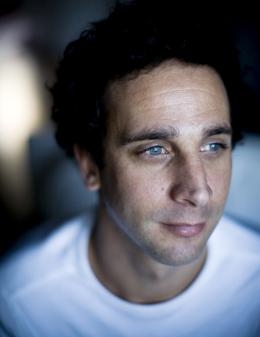Bio
William Daniels lives in Paris and is represented by Panos Pictures (London, UK).
 A child stumbles, smiling. He's been sniffing glue. He is one of the street children of Manila. Through the window of a car, a Libyan teenager stares into the distance. Gaddafi's army is approaching. The teenager is fighting for the first time. In Central African Republic, a woman appears to be faltering. What pain afflicts her? Traveling the world and its crises, either on assignment for major international magazines (Time, National Geographic, Le Monde) or for his personal work, French photographer William Daniels seeks out imbalance, tension, implosion. An image, for him, informs and suggests. It goes beyond the immediacy of the actual conflict and resonates long after.
A child stumbles, smiling. He's been sniffing glue. He is one of the street children of Manila. Through the window of a car, a Libyan teenager stares into the distance. Gaddafi's army is approaching. The teenager is fighting for the first time. In Central African Republic, a woman appears to be faltering. What pain afflicts her? Traveling the world and its crises, either on assignment for major international magazines (Time, National Geographic, Le Monde) or for his personal work, French photographer William Daniels seeks out imbalance, tension, implosion. An image, for him, informs and suggests. It goes beyond the immediacy of the actual conflict and resonates long after.
In 2007, William received the Jean-Luc Lagardère Foundation Fellowship, allowing him to document the nascent and fragile developments toward democracy in Kyrgyzstan. His work on the country culminated in the book "Faded Tulips". Over a series of visits, William tried to understand the effect this ephemeral revolution had on those who fought for it, lived it, endured it. His study of the country offers a unique perspective on the struggle for democracy in a distant and little known country, a struggle repeated the world over.
In 2008, his reportage on malaria, "Mauvais Air", photographed in seven countries and exhibited in September 2008 on the Pont des Arts in Paris and in the European Parliament in 2011 is published as a book by Images en Manoeuvre. His work on crises and suffering naturally led him to conflict zones. In Libya, he covered the uprising against the Gaddafi regime until the fall of Tripoli. From 2013 onwards, William has been covering the Central African Republic. On six journeys to the war-ravaged country, he comes across appalling violence. Without any attempt at diluting the reality of war, he chooses to show ordinary people - vulnerable, abandoned, set upon. What will become of them? What will happen to this country that seems doomed to permanent instability? His photography constantly poses questions, highlights a tension in the reality before him. There is often a sense of being on the verge of collapse. In 2014, on the occasion of the "Nuit Blanche" in Paris, William exhibited a 100 meter long display of images from the Central African Republic along the Seine.
Since 2013, with support from National Geographic and with a grant from the CNAP (National Centre for Visual Arts), William has made a number of trips to the Russian Far East, on the Baikal-Amur Mainline (BAM) railway. The BAM charts a lonely course north of and parallel to the Trans-Siberian Railway. Its construction attracted huge numbers of workers from all over the Soviet Union in its heyday. Many of them were left behind when the project faltered and was curtailed.
His work has won numerous international awards including two World Press Awards, the Visa d’Or Humanitarian Award at Perpignan photo festival, the Tim Hetherington Grant and the Getty Grant.